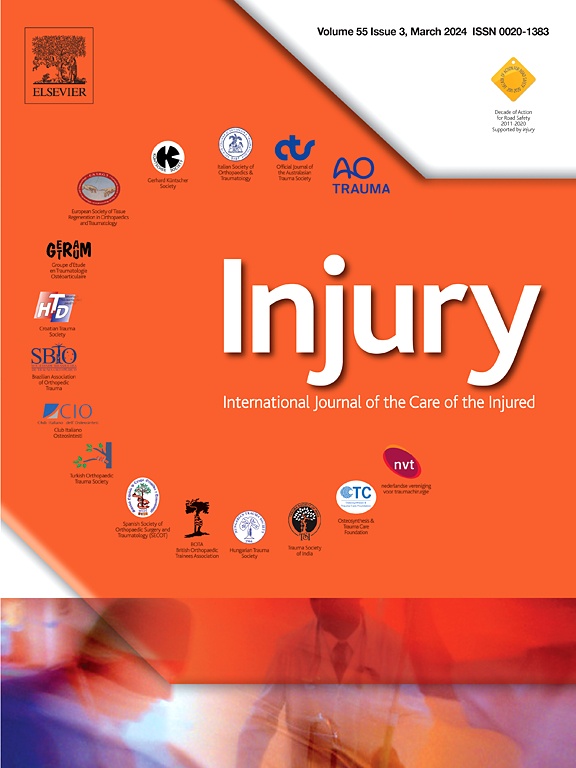
FARES method leads to less pain and quicker reduction of anterior shoulder dislocation

FARES method leads to less pain and quicker reduction of anterior shoulder dislocation
A prospective randomised clinical trial comparing FARES method with the Eachempati external rotation method for reduction of acute anterior dislocation of shoulder
Injury. 2012 Jul;43(7):1066-70. Epub 2012 Feb 12Synopsis
160 patients with acute anterior shoulder dislocation were randomized to either receive treatment using the FARES (fast, reliable and safe) method or the Eachempati external rotation method. The results indicate that both the FARES and Eachempati methods are safe and effective; however, the FARES method resulted in quicker reductions and decreased pain. Additionally, fewer attempts were needed to achieve reduction. The FARES method should be recommended for reduction of anterior dislocation of the shoulder.
Was the allocation sequence adequately generated?
Was allocation adequately concealed?
Blinding Treatment Providers: Was knowledge of the allocated interventions adequately prevented?
Blinding Outcome Assessors: Was knowledge of the allocated interventions adequately prevented?
Blinding Patients: Was knowledge of the allocated interventions adequately prevented?
Was loss to follow-up (missing outcome data) infrequent?
Are reports of the study free of suggestion of selective outcome reporting?
Were outcomes objective, patient-important and assessed in a manner to limit bias (ie. duplicate assessors, Independent assessors)?
Was the sample size sufficiently large to assure a balance of prognosis and sufficiently large number of outcome events?
Was investigator expertise/experience with both treatment and control techniques likely the same (ie.were criteria for surgeon participation/expertise provided)?
Yes = 1
Uncertain = 0.5
Not Relevant = 0
No = 0
The Reporting Criteria Assessment evaluates the transparency with which authors report the methodological and trial characteristics of the trial within the publication. The assessment is divided into five categories which are presented below.
2/4
Randomization
2/4
Outcome Measurements
2/4
Inclusion / Exclusion
4/4
Therapy Description
4/4
Statistics
Detsky AS, Naylor CD, O'Rourke K, McGeer AJ, L'Abbé KA. J Clin Epidemiol. 1992;45:255-65
The Fragility Index is a tool that aids in the interpretation of significant findings, providing a measure of strength for a result. The Fragility Index represents the number of consecutive events that need to be added to a dichotomous outcome to make the finding no longer significant. A small number represents a weaker finding and a large number represents a stronger finding.
Why was this study needed now?
Acute anterior dislocations of the shoulder are a frequently encountered emergency issue. There are many techniques used to reduce acute anterior shoulder dislocation, two of the newest techniques are; the Fast, Reliable and Safe (FARES) method and the Eachempati method. Although both are proven to be more effective than older methods, there have been no studies comparing these two new techniques.
What was the principal research question?
Are FARES and Eachempati external rotation methods safe, efficacious and reliable for the reduction of anterior shoulder dislocation and are there differences in outcome between these two methods?
What were the important findings?
- No patients had any post-reduction complications.
- 76/80 (95%) of patients in the FARES method group compared to 73/80 (91.25%) of patients in the Eachempati external rotation group achieved successful reduction of their shoulder dislocation. This was not a statistically significant difference (p=0.53, Fisher's exact test).
- There was a significant difference between groups in favour of the FARES method with respect to the speed of reduction (p<0.0001), pain felt during reduction (p<0.0001), and the number of attempts taken during reduction (p<0.0001).
What should I remember most?
Both the FARES and the Eeachempati method are safe and effective in reduction of anterior shoulder dislocation; however, the FARES method resulted in an increased speed of reduction, less pain, and this method resulted in a lower number of attempts to achieve reduction.
How will this affect the care of my patients?
This study supports the use of the FARES method in the reduction of acute glenohumeral dislocation, as it results in quicker reductions, less pain and fewer attempts required (compared with the Eachempati method). Future studies should compare the FARES methods to various other reduction techniques.
Learn about our AI Driven
High Impact Search Feature
Our AI driven High Impact metric calculates the impact an article will have by considering both the publishing journal and the content of the article itself. Built using the latest advances in natural language processing, OE High Impact predicts an article’s future number of citations better than impact factor alone.
Continue



 LOGIN
LOGIN

Join the Conversation
Please Login or Join to leave comments.